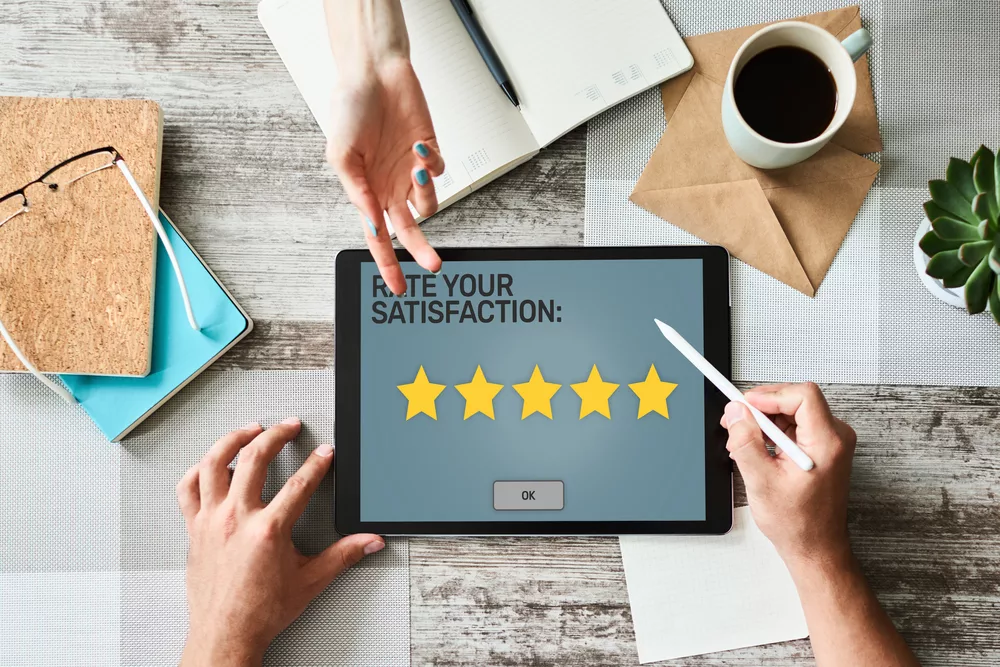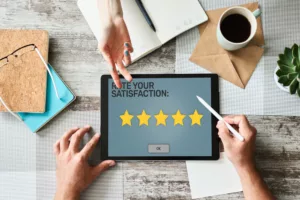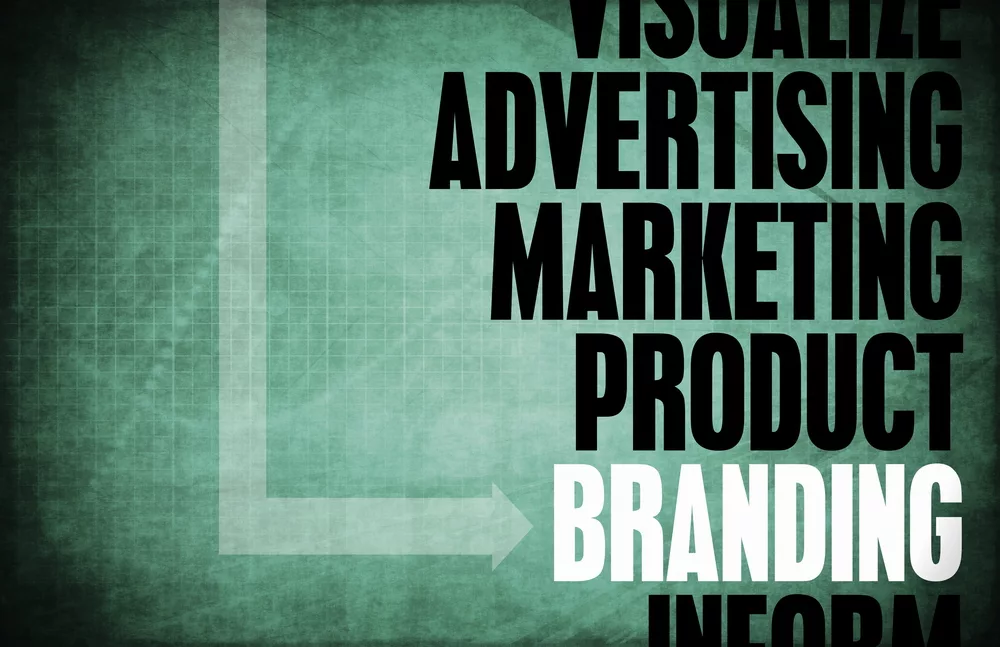Reviews have significant power over how people perceive your business. When the reviews are favorable, people are convinced that your business may be able to solve their problems. However, the instant a couple of negative reviews pop up, people may question the quality of your service and damage your brand’s credibility. Therefore, knowing how to effectively handle negative reviews online is crucial for businesses striving to maintain a positive online presence and reputation.
Key Takeaways
- Negative reviews can lead to potential loss of customers, harm brand reputation, and affect search engine rankings, highlighting the importance of managing them effectively.
- Respond quickly to demonstrate commitment to customer satisfaction, always acknowledge concerns, and avoid taking reviews personally.
- Thank customers for their feedback, regardless of its nature, to show appreciation for their input and commitment to customer communication.
- Show understanding and empathy towards the customer’s experience to de-escalate tensions and foster constructive dialogue.
Comparison Table: Responding to Negative Online Reviews
| Step | Description |
|---|---|
| Respond Quickly | Show commitment to customer satisfaction. |
| Always Respond | Acknowledge concerns and avoid ignoring feedback. |
| Stay Objective | Separate personal feelings from the business response. |
| Thank the Customer | Express gratitude for taking the time to provide feedback. |
| Personalize the Response | Craft responses that directly address the review. |
| Show Empathy | Acknowledge the customer’s frustration and validate their feelings. |
| Reiterate Company Standards | Reassure customers about dedication to quality service. |
| Offer Solutions | Provide tangible solutions to address the customer’s issue. |
Why Do You Need to Respond to Negative Reviews?
When you first receive a negative review, you may be tempted to cast it aside. Brush it under the carpet, so to speak. Leaving those negative reviews unaddressed, unfortunately, will only look unprofessional to those reading them.
So, if you receive a negative review, it is up to you to respond. Not only does this show that you care about the customer experience but also about your reputation. Customers want to know that your business values them and their feedback. Therefore, when you respond, your bolster that view—especially if you handle the negative comments correctly.
Furthermore, responding is a form of damage mitigation. When you acknowledge the negative experience, you can soften the blow and even show the customer that you are willing to make their previous experience better.
Lastly, the negative review can be viewed as feedback that can then be channeled back into your business. Listen earnestly to what is being said and aim to not only correct the customer’s issue but any others that could happen in the future.
How Do Negative Reviews Impact Your Business?
Negative reviews can impact your business in several ways:
Loss of Potential Customers
Potential customers often rely on online reviews to gauge the quality and credibility of a business. Negative reviews may deter these prospects from engaging with your business, leading to potential loss of revenue.
Harms Brand Reputation
Negative reviews can tarnish your brand’s reputation, eroding trust and credibility among both existing and potential customers. A string of negative reviews can create a negative perception of your brand, leading to decreased customer loyalty and diminished brand value over time.
Affects Your Search Ranking
Search engines like Google consider online reviews as a key factor when determining search rankings. Negative reviews can adversely impact your search engine visibility, pushing your business down in search results and making it harder for potential customers to discover your business online. This can significantly impede your ability to attract new customers and grow your business.
How to Effectively Handle Negative Reviews Online
Now that you know why it is important to respond to negative reviews, as well as the impact they may have on your business, let’s look at the proper way to handle them.
1. Respond Quickly
Addressing negative reviews promptly is crucial to showcase your commitment to customer satisfaction and demonstrate that customer feedback is taken seriously. Quick responses not only prevent the escalation of issues but also mitigate further damage to your business’s reputation. Customers appreciate businesses that are responsive and proactive in resolving concerns, and a timely response reflects positively on your commitment to service excellence.
2. Always Respond
Ignoring negative reviews can compound the problem and harm your reputation. Even if a complete resolution is not immediately possible, always acknowledge the customer’s concerns. Expressing your willingness to address the issues shows that you value customer feedback and are actively working to improve. This responsiveness can have a positive impact on public perception, demonstrating transparency and accountability.
3. Don’t Take the Negative Review Personally
Negative reviews are opportunities for constructive feedback rather than personal attacks. Maintain an objective perspective, focusing on understanding and addressing the customer’s concerns. By separating personal feelings from the business response, you can approach negative feedback with a solutions-oriented mindset, leading to improvements in your products or services.
4. Thank the Customer for Taking Time to Write
Regardless of the nature of the feedback, expressing gratitude to the customer for taking the time to share their thoughts is essential. This gesture demonstrates professionalism and empathy, acknowledging the effort they put into providing feedback. A thankful response sets a positive tone for the interaction and reinforces your commitment to customer communication.
5. Make Sure the Response is Personal and Authentic
Craft responses that directly speak to the specific issues raised in the review. Avoid generic or automated replies, as they can appear insincere and exacerbate customer dissatisfaction. Personalized responses show genuine engagement with the customer’s concerns, conveying authenticity and a sincere commitment to resolving issues.
6. Be Empathetic
Demonstrating empathy is key to diffusing negative situations. Acknowledge the customer’s frustration and validate their feelings. By showing understanding and compassion, you create a connection with the customer, signaling that their concerns are heard and valued. Empathy can de-escalate tensions and pave the way for constructive dialogue.
7. Reinforce Your Company Standards
Reiterate your dedication to providing excellent customer service and emphasize your company’s values and standards. Assure the customer that their experience does not align with your usual level of service and that corrective measures are being taken internally. This reassurance reinforces your commitment to maintaining high standards and customer satisfaction.
8. Offer a Way to Correct the Issue or Mistake
Providing a tangible solution demonstrates a commitment to resolving the customer’s concerns. Whether it’s a refund, replacement, or another form of compensation, offering a resolution shows proactive efforts to rectify the situation. This not only addresses the immediate issue but also helps rebuild trust and goodwill with the customer. A positive resolution can turn a dissatisfied customer into a loyal advocate for your brand.
Looking for a Digital Marketing Expert for Your Business in New Jersey?
Yes, getting negatives reviews can be horrible and terrifying. However, you can turn those bad reviews around and make your business seem honest and trustworthy. Sometimes the most reputable thing you can do is apologize. Doing so may even help you convert the author of the review into a loyal repeat customer!
If you’re seeking expert guidance in managing your online reputation and digital marketing efforts, Digital Marketing Group, LLC is here to help. Contact us today to learn how we can elevate your brand’s online presence and reputation management strategies. You can reach us by calling 1-855-969-4736 or by filling out the online form.







